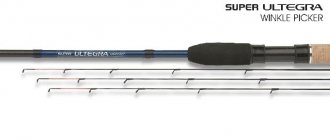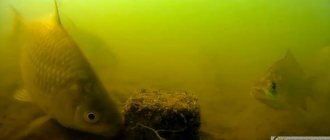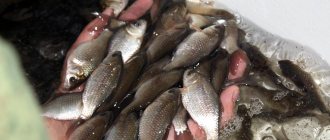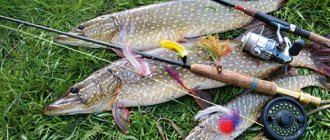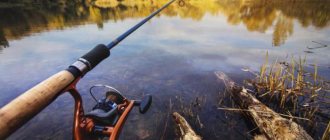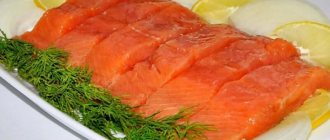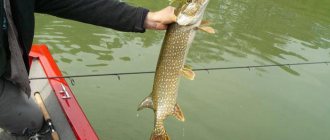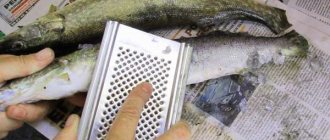The essence and types of cake
The cake is a squeeze from the seeds of oilseed crops. It is widely used for bait as well as fish bait.
Types of cake:
- sunflower - the most common and widely used by fishermen;
- soy;
- linen;
- peanut;
- corn;
- mustard.
In addition, there are two types of cake:
- steamed;
- fried.
Fried cake is in greatest demand among fish, since its smell is many times stronger than that of steamed cake.
What is cake?
Before you learn all the intricacies of fishing with the help of a crusher, you should understand what the cake is and what it consists of.
This product is made from the seeds of various oilseeds, which during the pressing process have undergone special processing using pressing.
Often, sunflower seeds are used, but a wide variety of other varieties of this bait can be found on sale.
This product is an excellent feed for animals and is used quite effectively in agricultural production.
The composition contains the following components:
- water (maximum amount 11%);
- protein (amount varies from 30 to 40%);
- oil (maximum share is 9.4%)
- fiber (5%);
Benefits of using pulp
The main advantages of cake for fishing:
- extremely attractive to fish;
- dissolves quite quickly in water, while creating a kind of tasty cloud with an appetizing smell for fish;
- very easy to make with your own hands;
- sold in any specialized store at a low price;
- Possibility of fishing during flow or in still water.
Preparing gear
Equipment for fishing for makukha should be prepared in advance, but you can also do this directly while fishing. There are a large number of varieties of these gears, but among them there is one that is simpler and more effective.
Materials:
- Sinker. When fishing for topwater, you should use dovetail and horseshoe sinkers. It is necessary to choose the correct weight: for a reservoir without a current 50-80 g, with a current 90-160 g.
- Fishing line or cord. The recommended diameter of the fishing line is 0.3 mm, and the diameter of the cord is 0.2 mm.
- Hook. The hook size is selected according to the type of fish living in the reservoir; the recommended size is No. 4 and No. 6.
- Leash. It is recommended to use a cord of small diameter - 0.2 mm; when using a metal leash, peaceful fish may be scared.
- Top clasp. Sold in a fishing store. It is recommended to take a couple of pieces at a time when fishing. The mechanism is a loop that holds the sinker and top together. Leashes with hooks are tied to the wide end, and fishing line is attached to the narrow end.
Manufacturing:
You will need a piece of fishing line or cord measuring 30 cm, which must be threaded through the hole on the sinker from the narrow side to the wide side, then tie 2 knots at the end of the fishing line or cord. The main line should be tied to the fastener on the narrow side. The leash has hooks attached to both sides, and the leash is bent in the middle and tied to the clasp using a loop.
You should make a hole in the bars with a diameter of 4 mm and pass the fishing line through it and the load. Insert the fishing line into the narrow end and tie it to the clasp, then thread it through the hole. Next, you should make small indentations in the crown for the hooks, since they become dull when placing a dense crown.
Basic requirements for cake
To achieve the best results from fishing, you must ensure that the cake meets certain requirements:
- it is important that the cake is very fresh, then the fish will be caught better;
- it must be made specifically for a specific fishing;
- its density should be greater in reservoirs with strong currents and vice versa.
Today, you can purchase aromatic additives for cake in specialized retail outlets. They are different, depending on water conditions, as well as the time of year:
Summer:
- honey;
- strawberry;
- plum and others.
Cold water:
- dill;
- garlic;
- anisic;
- cheese and others.
Universal:
- corn;
- vanilla.
Important advice: anglers have noted that in some reservoirs fish bite much better on flavored cake, so don’t be afraid to resort to such additives and experiment with them.
Recommendations for fishing
The hook can be stuck into a piece of topcoat or threaded through a small ball of foam. In this case, the equipment will float above the crown and you can safely make the first cast. The requirements for the rod and reel are the same as for the feeder. It is recommended to feed the area earlier, and casts must be made accurately and best on the muddy surface of the bottom of a reservoir with little vegetation.
After casting the rig for half an hour, the top gets intensely wet, attracting fish. Please note that the fish can taste, bite and spit out pieces of the top, and this game can take more than one minute, and you must calculate the time correctly and hook your trophy.
Happy fishing and good catch!
Who gets caught cheating?
The following fish are most successfully caught using cake:
- carp;
- carp;
- bream;
- rudd;
- roach.
The most favorable time to fish with cake is summer and spring. In winter it is also possible, but due to climatic conditions it is more difficult.
Important advice: fish like carp are the best fish to catch with cake, especially in the summer.
What should be the cake for fishing:
- necessarily with a rich smell;
- fresh;
- It is better to use a rectangular shape.
Why is it used in agriculture?
Also check out these articles
- Royal jelly
- Rabbit Lop-eared ram
- Redcurrant jam
- Tomato variety Lady fingers
Sunflower cake is one of the most affordable and very useful components of the diet of animals and birds, which is why it is very popular in agriculture. What is its use?
Why is cake used in agriculture?
- It has many useful substances necessary for both cattle and poultry, pigs, rabbits;
- Has a positive effect on the egg production of birds (ducks, chickens, geese, turkeys);
- Increases the reproductive function of animals and birds;
- Normalizes the body's metabolic processes;
- Sunflower cake is one of the factors for the rapid growth of young animals;
- Reduces the risk of diseases even during epidemics.
Interesting!
Oddly enough, cake is much healthier than fresh sunflower seeds.
Tackle and equipment for cake fishing
Gear requirements
Cake fishing is done using equipment such as a spinning rod, a fishing rod, and a feeder. The latter is the most effective and for this you will need:
- rod - must be hard, long and must be from two and a half to four meters;
- the reel is powerful and always has a rear clutch, while the spool size is three thousand;
- fishing line - you should use a very strong one, with a thickness of 0.28 millimeters;
- hook - mainly in sizes six to eight, with a large hook height and medium width;
- sinker - you need to use a flat one, about three by three centimeters.
In the process of fishing, using feeder gear is very convenient and simple.
If you want to learn more about how to make feeder tackle, you can read our article.
Important tips: the feeder has several interchangeable tops, so depending on the wind or current you should choose the right one. You need to cast the line as far as possible, and you need to constantly monitor the rod. Fishing with a feeder is not a quick task, so the angler needs a lot of patience.
Application of equipment
Equipment for fishing with oil cake is called oil cake. Its design consists of a plate onto which a cube of makha (pressed cake) is attached. On one side, holes are made for hooks and three cuts for high-quality fastening of the cake to this plate. This design is secured on both sides with conventional stoppers and an elastic band for safety. This makes it possible to securely attach the bait.
Then everything is simple, the fish finds the top and begins to suck it, while the hook is swallowed along with the cake.
You can attach the cake in the following ways:
- using a loop on a fishing line - for this it is necessary to make transverse cuts to a depth of five millimeters on the cake;
- using a clip, you need to drill a hole in the middle of the cake;
- nylon cord, for this purpose cuts are made or a hole is drilled.
Important tip: the cord must be the right color.
Hooks can be attached in several ways:
- to the clip itself or to the loop of the fishing line;
- stick it into a block of cake;
- hide them in the bait by making two or three slits.
Important tip: the hooks must be free from the bait. All this will allow the fish not to distinguish the elements of the cake from the hook itself. It is better to take four hooks - two of which are loaded with oil cake, and the others with a worm - the point is that the fish will be attracted by the aroma of the oil cake, but it will swallow the worm.
How to use pulp from a juicer?
Views 307
You put your favorite fruits (and maybe also vegetables) into the juicer, which produces delicious juice. A side effect of home-made juice production continues to be pomace, that is, the pulp of crushed fruits and vegetables, devoid of most of the nutrients transferred into the drink. Although the cake is quite dry, it consists mainly of fibers with a high fiber content. This is very good for metabolism, so it’s a pity that such a useful “waste” will go to waste. DOMOVEY will tell you how to use the pulp from a juicer.
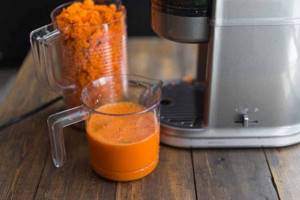
What are juicer extracts?
A juicer is a great alternative for those who don't want to buy store-bought juices or nectars, which are often sweetened, full of artificial additives, and quite expensive. If you already have such a device, you probably know about its benefits. First of all, these are healthy and nutritious drinks that you make to your taste from your favorite fruits and vegetables. You influence the composition and quality, and at the same time prepare the drink much cheaper and at any convenient time.
In addition to the delicious, vitamin-rich juice, the pressing process leaves behind dry pulp that may seem fit only for throwing in the trash. This is a misconception; fruit and vegetable squeezes can be successfully used - and even in several ways. It can be used to prepare various delicacies or be used as food for rodents or fertilizer for plants.
Moreover, this product is far from useless for health - the pomace is very rich in fiber. Although it is not absorbed into the body, it is extremely important for it: fiber regulates digestion, provides a feeling of fullness, supports the functioning of the digestive system and regulates metabolism. It would be a shame not to take advantage of these benefits because they can help you feel better.
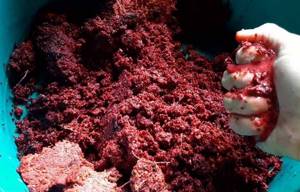
7 ideas for using juicer pulp
The pulp from the juicer is a fairly dry product, but still rich in taste. Therefore, it can be successfully added to various dishes to increase their volume, enhance the taste or change the consistency. Below are some ideas for what to do with leftovers from juicing.
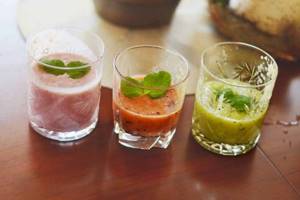
1. Smoothie. It's a fairly thick smoothie that's meant to be hydrating while keeping you full at the same time. All you need is to thoroughly mix the pulp with the juice using a blender to obtain a homogeneous mass. To increase its nutritional value, you can also add, for example, chia seeds, spirulina or kefir.
DOMOVEY recommends: Beetroot smoothie “Gifts of Autumn”
2. Cream soup. When you're making a creamy soup or just like your soups to have a slightly thicker consistency, the pulp makes an excellent thickener. Just mix it with the rest of the ingredients. For example, the pulp from an apple or pear goes well with parsley cream soup, and orange juice adds a unique bouquet to beet cream soup.

3. Vegetable cutlets. Here, squeezing vegetables from a juicer works best - for example, beets, carrots or celery. To the cake you should add cooked porridge, lentils or chickpeas, as well as eggs, flour and your favorite spices. Then mix well and fry in a pan or bake in the oven.
4. Pasta for sandwiches. You can combine the squeezed pulp with your favorite ingredients. Mix with dried tomatoes, mackerel, chicken and sunflower seeds, for example, and then season to taste. Although the cake does not have an intense taste, other additions will make it acquire an expressive taste.
DOMOVEY recommends: What to spread on bread, besides butter and margarine?

5. Fit balls. This is a popular sweet that is eagerly eaten by lovers of healthy eating. Instead of protein bars and pralines with sugar, you can use fruit pulp from a juicer. It is enough to get a smooth mass using a blender, add dates, coconut, cocoa and form balls, then roll each one in coconut flakes or cocoa. They are great as a snack.
6. Animal food. If you have a mouse, rabbit, chinchilla or guinea pig, the leftover juice will be an excellent food for them and will be eaten with great pleasure.
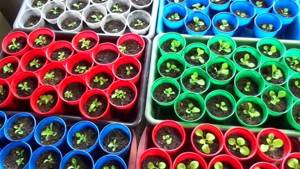
7. Fertilizer for plants. Squeezed fruit or vegetable pulp is ideal for compost. Place the cake in a place specially prepared for this, and then use it without restrictions to fertilize the soil in the garden. This is an environmentally friendly solution that will have a positive effect on the productivity of your crops, since it will simultaneously fertilize and mineralize the soil.
Now that you know how to use pulp, many will surely appreciate the benefits of using a juicer, in addition to making delicious, fresh drinks. However, think of these hacks as suggestions that you can freely modify to your liking.
DOMOVEY recommends: 5 foods that are best eaten raw
Posting site materials is allowed only if there is an active hyperlink https://domovei.com/
0 0 vote
Article rating
Self-production of equipment
The bait can be purchased at a specialized fishing store, or you can also make it yourself.
Among fishermen, the most popular are rectangular or square pressed baits.
Making such equipment yourself is not difficult and requires very little time.
Preparation method:
- Take an ordinary piece of iron or a lead plate.
- Cut out a rectangular shape (25x15x8 millimeters is possible).
- Make a depression of approximately 4 mm in the center.
- Drill holes in the transverse direction of about one and a half millimeters for the fishing line.
- Cut the nylon thread and tie hooks at the ends, preferably numbered six or eight.
- Carefully tie the hooks and thread into the sliding loop.
- Insert the cake into this loop and press tightly to the plate.
Important advice: two hooks should be inserted into the cake itself, and the remaining two should be left free and a worm should be attached.
DIY cake
If you cannot purchase fresh cake, you can make it yourself. Dry sunflower or hemp seeds must be fried in a frying pan. Roasted seeds must be processed in a meat grinder or coffee grinder. This cake is usually more flavorful than the one you can buy in the store.
Helpful advice! The cake must be stored in a sealed container to protect it from moths.
In order to obtain a solid cake from a powder cake, you need to compress it and keep it in a hot oven.
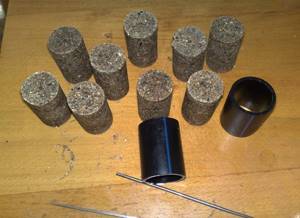
Note! The shelf life of the cake depends on how dry it is. The drier it is, the longer the shelf life.
There are many recipes for making bait from cake, but the most proven is this one:
- Boil the store-bought cake to a dough-like consistency.
- Cotton wool and flour are added to the resulting mass so that the dough becomes viscous.
- Mix the mass.
- Roll into balls, which can then be placed on the hook.
- The cake is ground into small crumbs.
- A glass of the resulting mass is mixed with ½ glass of wheat flour.
- The components are poured with water and stirred to a dough-like state.
- Rolled balls are baited onto the hook.
- A tablespoon of ground cake is mixed with three tablespoons of egg white and flour (in equal parts).
- Add a pinch of vanillin and salt.
- The components are mixed and boiled for 5-6 minutes over low heat.
- The warm mass is kneaded until a thick dough is formed.
- Rolled balls are baited onto the hook.
Bait placement and replacement
It is much more advisable to adhere to the following rules when placing the bait:
- place along the edge;
- place the bait in the hole.
An important point: after thirty minutes of being in the water, the makukha (cake) begins to soak and only after that attracts the attention of the fish with its smell.
Replacing bait
Quite often there are cases when the bait needs to be replaced:
- if damaged on an uneven bottom;
- came off, and as a result, remained at the bottom of the reservoir;
- was initially unusable;
- damage due to an unsuccessful bite and others.
To replace, you need to carefully remove the remains or the entire bait, remove it and install a new one.
Important advice: when fishing, it is better to take several baits with you, preferably of different types.
Bite
Step-by-step actions when biting:
- the fishing line will stretch, then the friction brake will work and the fishing line will unwind from the reel;
- tighten the clutch;
- make a careful hook;
- fish out smoothly;
- When the fish gets tired, take it out of the water.
Important advice: in order to prevent the fish from escaping, you need to adjust the clutch to the tightest possible position.
How to catch carp using a fishing rod
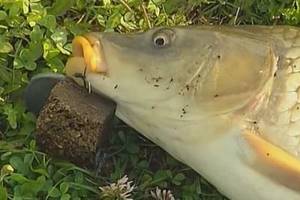
The choice of cake when purchasing is made based on the fishing conditions in the reservoir. For currents, the hardest baits are selected. In stagnant reservoirs, looser material is successfully used. Having decided on the fishing point, they feed by sending pellets and dense balls of bait to the installation area, which should lie on the bottom. After feeding, they throw out the equipment with cake bait and put the line on the signal, with the baitrunner turned on. If there are no bites for two hours, the bait is completely changed to a new piece of cake.
The carp, tasting and sucking the briquette, pulls the hooks installed into the finished crown into its fleshy mouth, which leads to the trophy self-cutting when moving away from the point where the bait was installed. At this moment, the alarm begins to sound intensively, without stopping, which indicates a successful result of the bite. The fisherman must immediately pull the rod in the opposite direction to the movement of the line, thereby driving the hooks more tightly into the mouth of the fish. Once you feel resistance, you can begin to slowly fish, pumping out the giant with a rod and reeling in the free line using a reel.
The carp is taken to the shallows to the shore and removed from the water using a landing net. The hooks are removed from the mouth using an elongated surgical clamp, trying to harm the caught trophy as little as possible. The catch-and-release principle implies preserving fish stocks and providing as many fishermen as possible with the opportunity to fight the trophy.
Peculiarities of cake fishing depending on the season
Features of fishing in autumn and winter
Winter and autumn times for fishing are not suitable for everyone, and fish are not always caught well.
Features of winter and autumn fishing:
- in strong currents it is necessary to fish from the shore;
- when the ice is thick, the fish goes deep because little light penetrates;
- It is preferable to fish in calm and dry weather;
- Sprinkle the hole with snow so that the light does not scare away the fish.
Cake fishing in winter has its own characteristics:
- the cake should be dense;
- very odorous, since the fish is far away and the smell should be felt at a great distance;
- It is better to use an aromatic additive purchased in specialized stores for this time of year.
Cake fishing in spring and summer
Peculiarities:
- in spring and summer, it is better to start fishing with the arrival of the first warm days;
- the ideal water temperature is more than fifteen degrees;
- ideal months in spring are April and early May;
- ideal summer months are June-September, where fish activity peaks;
- It is preferable to fish on warm, non-rainy nights;
- You can fish with a cast or spinning rod;
- the boat must be made of rubber, and oars must not be used;
As compost
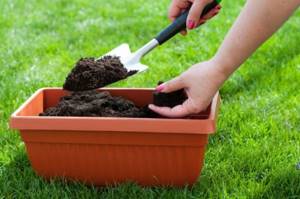
Coffee grounds added to a compost pit saturate the humus with useful substances, in particular nitrogen. Earthworms love this kind of compost.
It is enough to pour about 500 g of cake into the hole to obtain balanced humus for fertilizing the gardener’s crops (potatoes, carrots, legumes).
It is important not to overdo it with the amount of grounds, as the compost will change its color from greenish to brownish-brown and will not serve the function of nourishing the soil as effectively.
Blitz tips
- In the summer, when fishing with cake, the bait should be thrown in several places for the best result.
- It is better to put a fingertip on the cake so that it opens only one centimeter; when it swells, the bait will open gradually, which will allow the cake not to fall into pieces longer
- It’s better to fish together, so that the second person can go into the pond and hook the fish. The cake is extremely attractive to fish, especially carp and carp. It is better to prepare the cake in advance and do it yourself. For the fisherman, this is a great expanse for experimenting with choosing the best shape and smell.
Photo of the makushatnik
Read here Foam fish - the secrets of catching pike and other predators with foam fish (125 photos and videos)
Help the project, share on social networks 

0
Methods of fertilizing plants
There are several ways to use coffee grounds as fertilizer:
- preparing mulch (litter);
- adding to compost;
- soil fertilization;
- watering (diluted with water);
- plant nutrition.
If coffee grounds are used for compost, then you need to start preparing it in the fall so that it is ready for spring. In other cases, the cake begins to be used from the beginning of the summer season. Unlike mineral fertilizers, this is an organic product. It does not contain nitrates and nitrites, which are then found in plant foods.
- This is interesting: How to brew ground coffee without a Turk and a coffee maker

